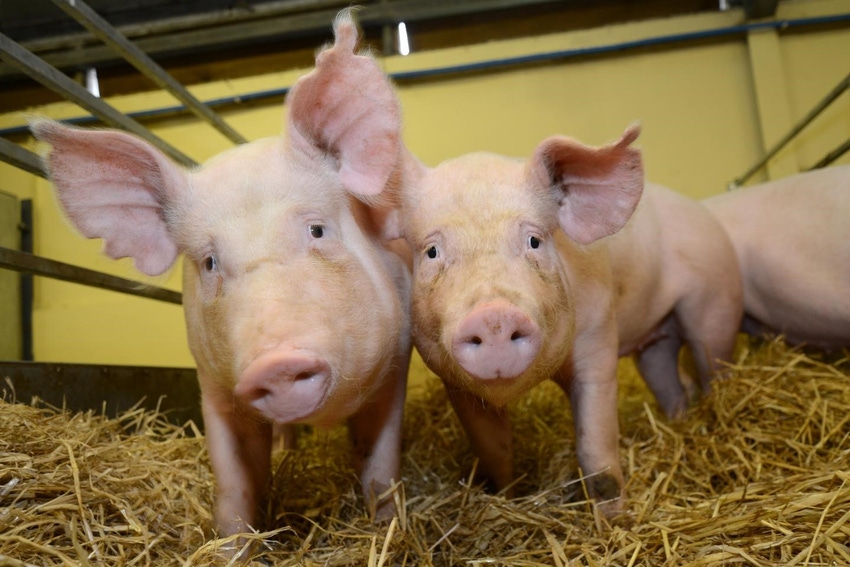The animal geneticist says American scientists and producers are at a disadvantage, as other countries are allowing this technology.

If you were going to select for a more efficient pig, Alison Van Eenennaam says the first five areas you might focus on are increasing the litter size, the number of litters per year and the amount of lean meat per pig while also decreasing the amount of time needed to get to market weight and the feed needed to produce a finisher pig.
“You have done all that in spades,” the University of California-Davis animal geneticist told a room full of pork producers and industry representatives at Iowa Pork Congress this week.
In fact, thanks to the pig genetic improvements in the last 35 years, average U.S. pig farms are producing over 4,200 pounds of live weight per sow per year compared with 1,770 pounds in 1980. Market pigs require 4% less feed today to produce a 17% heavier carcass. Our industry has increased pork production by 28% with only a 10% increase in the number of animals harvested. Using 1980 productivity, it would have taken an additional 9 million sows compared with today’s 6 million to achieve current pork production.
Pat yourselves on the back. The industry has made some tremendous gains. But where do we go next?
By 2050, it is estimated that the world’s population will reach 9.1 billion, 34% higher than today, and places such as China and Africa will be hungry for more protein. How can we improve pork production efficiency to feed them?
Van Eenennaam says we might look to decrease the undigested nutrients coming out the back end in manure, improve the health profile of pig products for human consumption, select for pigs that do not get sick and reduce the amount of fat and try to improve piglet survival.
Unfortunately, she says, “it’s not we might do that, we have done this, but we can’t use this technology.”
Over the past few years, the industry has addressed several production inefficiencies and disease concerns through gene editing.
Problem: Phosphorus pollution in pig poop
Answer: Enviropig, the first swine able to digest phytate on its own. The University of Guelph project found a way to produce genetically modified pigs so that their salivary glands would secrete phytase.
Problem: Fatty acid composition of pork
Answer: Through research collaboration among the University of Missouri, Massachusetts General Hospital and Harvard Medical School, scientists have been able to genetically modify pigs to produce omega-3 fatty acid, which is known to improve cardiovascular fitness and reduce the risks of heart disease.
Problem: Editing for African swine fever
Answer: The University of Edinburgh has identified genetic variation between the warthog and domestic pig that could underlie the different responses of the two species and use genome editors to introduce these changes to domestic pigs.
Problem: Editing for porcine reproductive and respiratory syndrome virus
Answer: Researchers at the University of Missouri have created a way to protect offspring from the PRRS virus during pregnancy. The scientists have found that mothers without the CD163 protein are resistant to the PRRS virus and give birth to healthy, normal piglets.
Problem: Editing to improve survival of piglets
Answer: A team of researchers from several institutions in China and one in the United Kingdom have used the CRISPR-Cas 9 gene editing technique to cause test pigs to retain less bodyfat.
All of these potentials have been done in the research lab, but Van Eenennaam says we haven’t been able to bring anything to the market due the controversy around GMOs. In 2017, the FDA came out with a proposed regulatory approach toward gene editing livestock, saying “if you make an intentional alteration using that technology on an animal we are going to regulate it as a new animal drug.”
“DNA variation is the very basis of all our selection programs. That is how we selected for more efficient pigs,” Van Eenennaam says. “This idea that DNA variation is a drug is absolutely nonsensical.”
Van Eenennaam gives credit to the National Pork Producers Council for their position on the technology:
��“This [FDA] regulatory path will result in a lengthy and expensive approval process, and functionally make any gene edited animal a living animal drug — and every farm raising them a drug manufacturing facility. It does not allow for a risk-based approach that takes into consideration the familiarity or complexity of the genetic changes, and the fact that they could be achieved through conventional breeding techniques (though at the expense of time and genetic improvement from decades of animal breeding). The FDA approach is also out of step with the regulatory pathways under development in the rest of the world.”
The animal geneticist says American scientists and producers are at a disadvantage, as other countries are allowing this technology. She’s even started a petition calling for DNA to not be declared a drug.
“If we don’t have access to this technology we are not going to be able to use these breeding methods to address the projected increase in animal protein demand. If we look at where the demand is coming from, it is very squarely located in these developing countries and the two species that are going to be the most important in addressing the animal protein increases are pigs and chickens,” Van Eenennaam says. “Any time that we tie breeders’ hands behind their back, by saying ‘you can’t use that technology,’ you are going to slow down the rate of genetic gain and slow our ability to get to this outcome.”
About the Author(s)
You May Also Like





